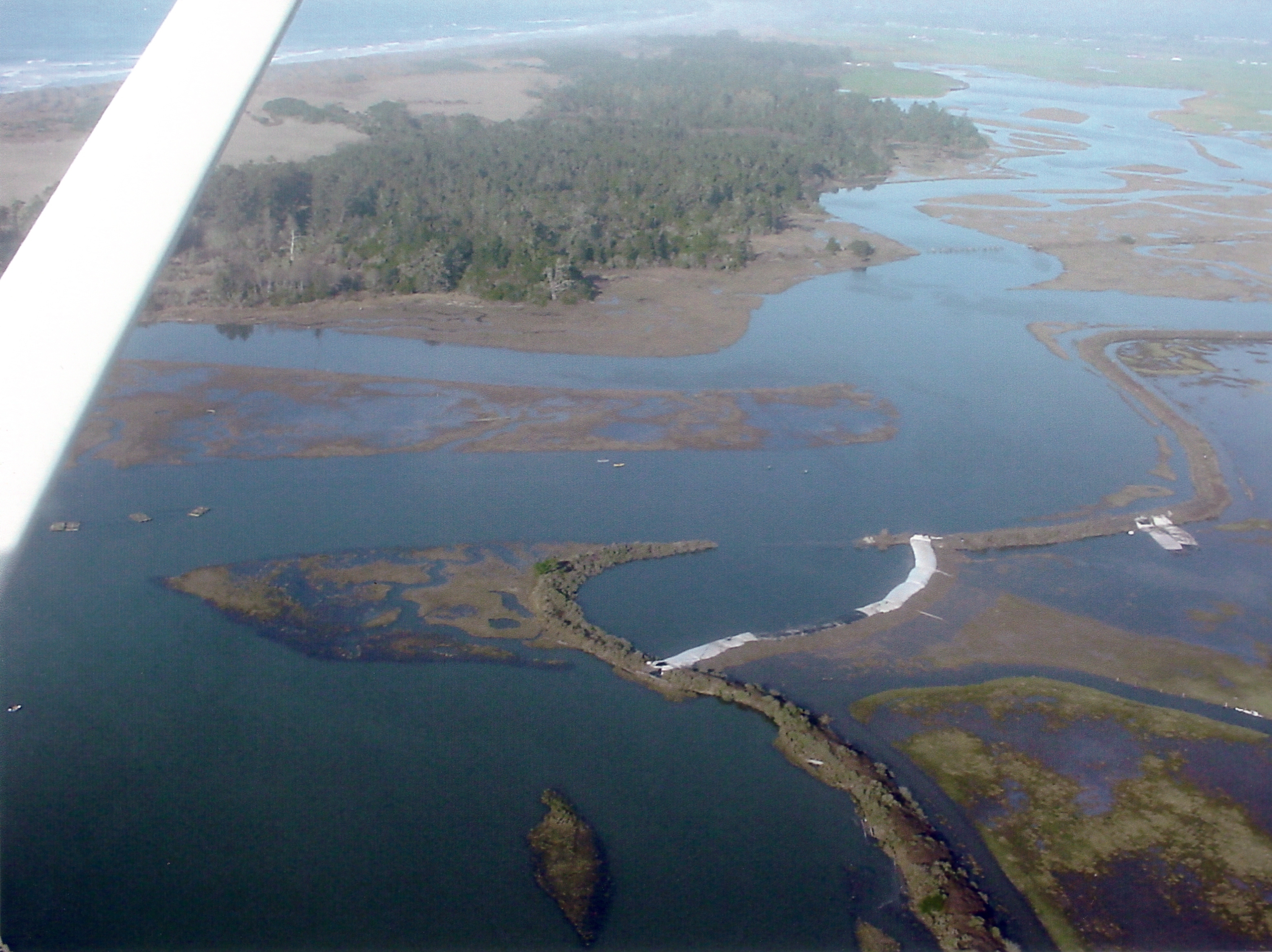
This is an overview of an emergency installation to isolate a levee breech in reclamation district #762. This levee breach was in the Arcata Slough located in Humboldt County, CA. The slough is tidal water from the Pacific Ocean, which you can see at the very top of the picture.
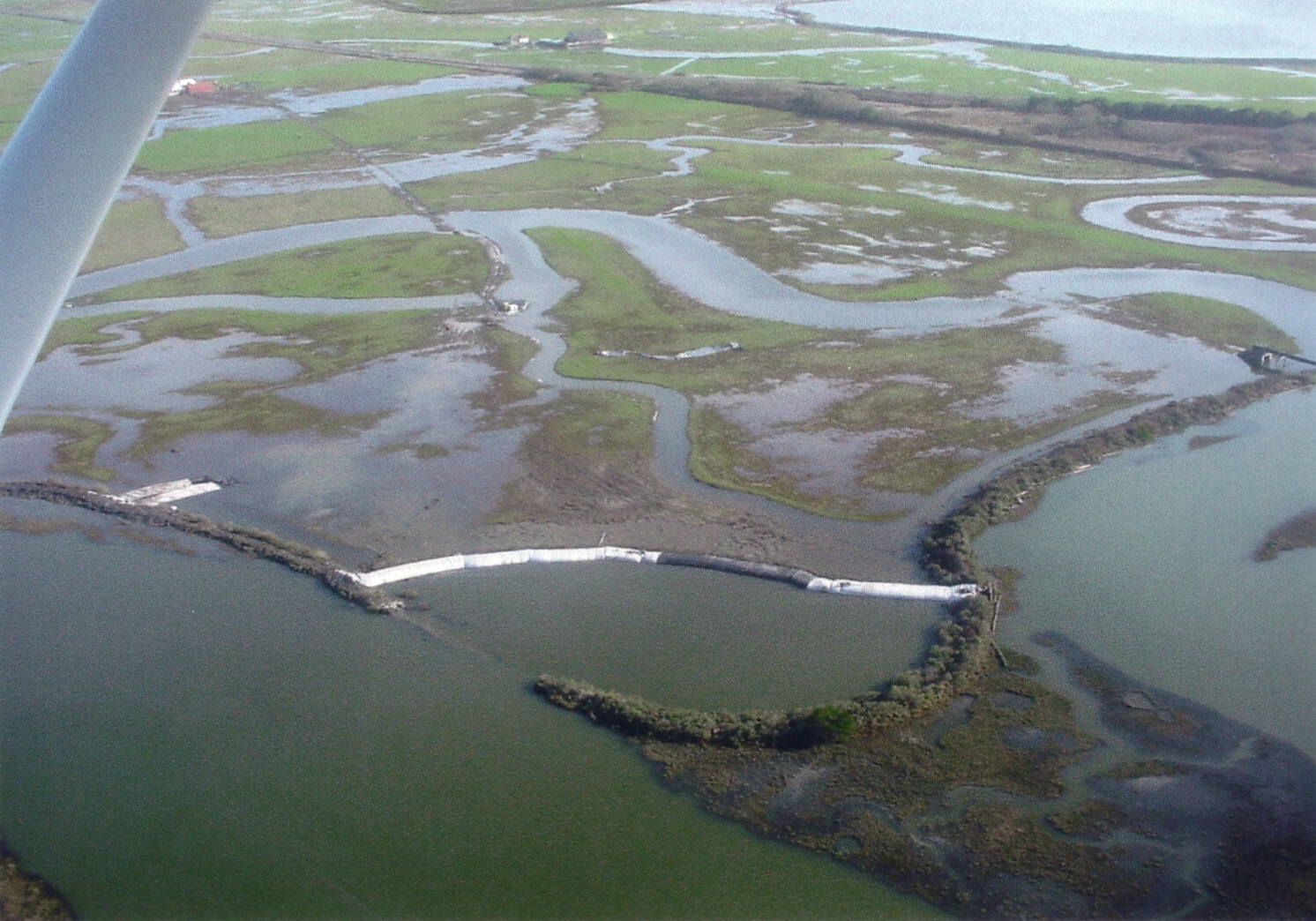
The levee break was 150ft long and required 450ft of 8ft tall AquaDams, installed in three sections.
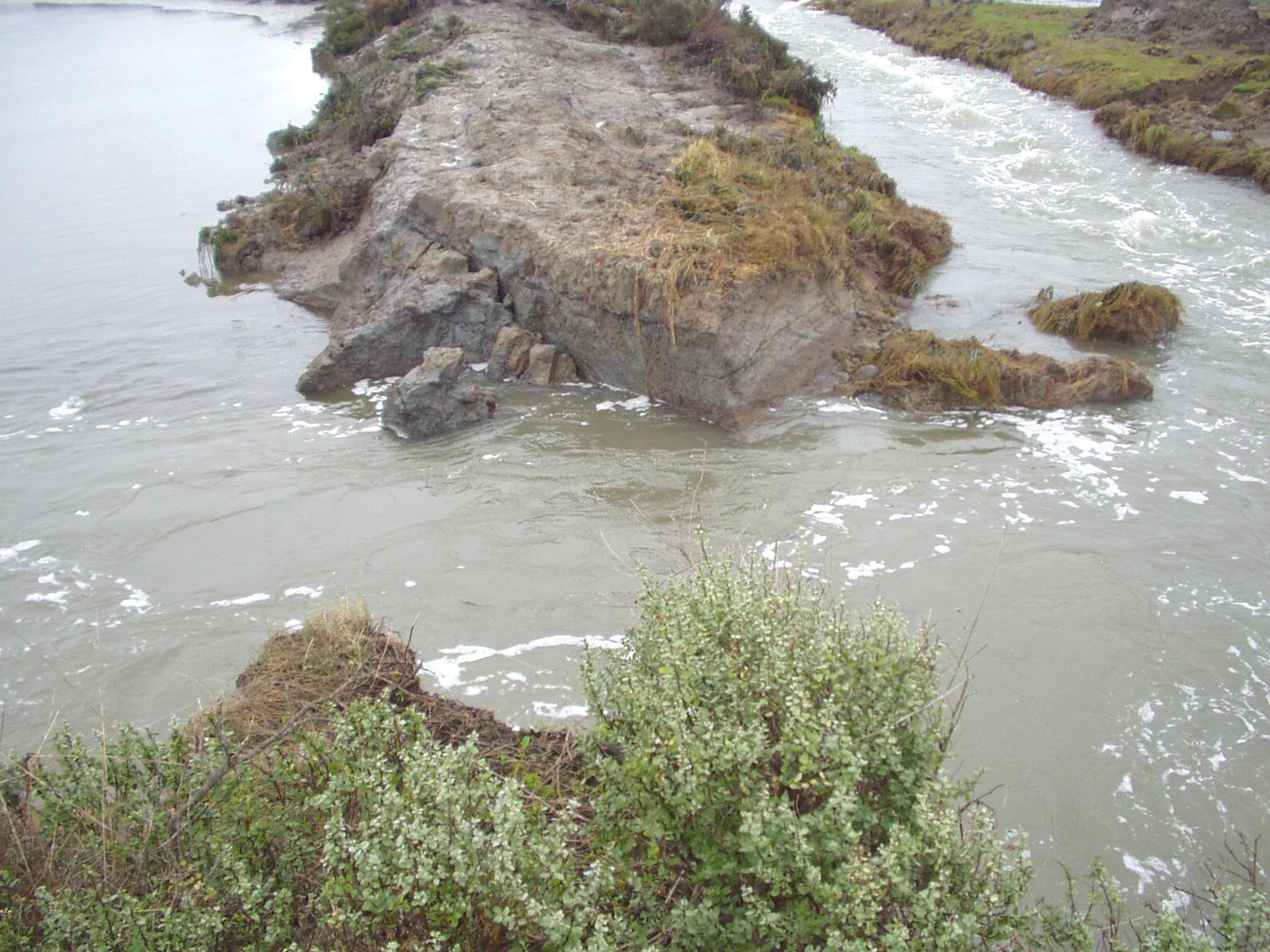
Due to the poor stability of the remaining levee and the location of the break (on the bend), a larger section was bypassed to accommodate a better installation of the AquaDams.
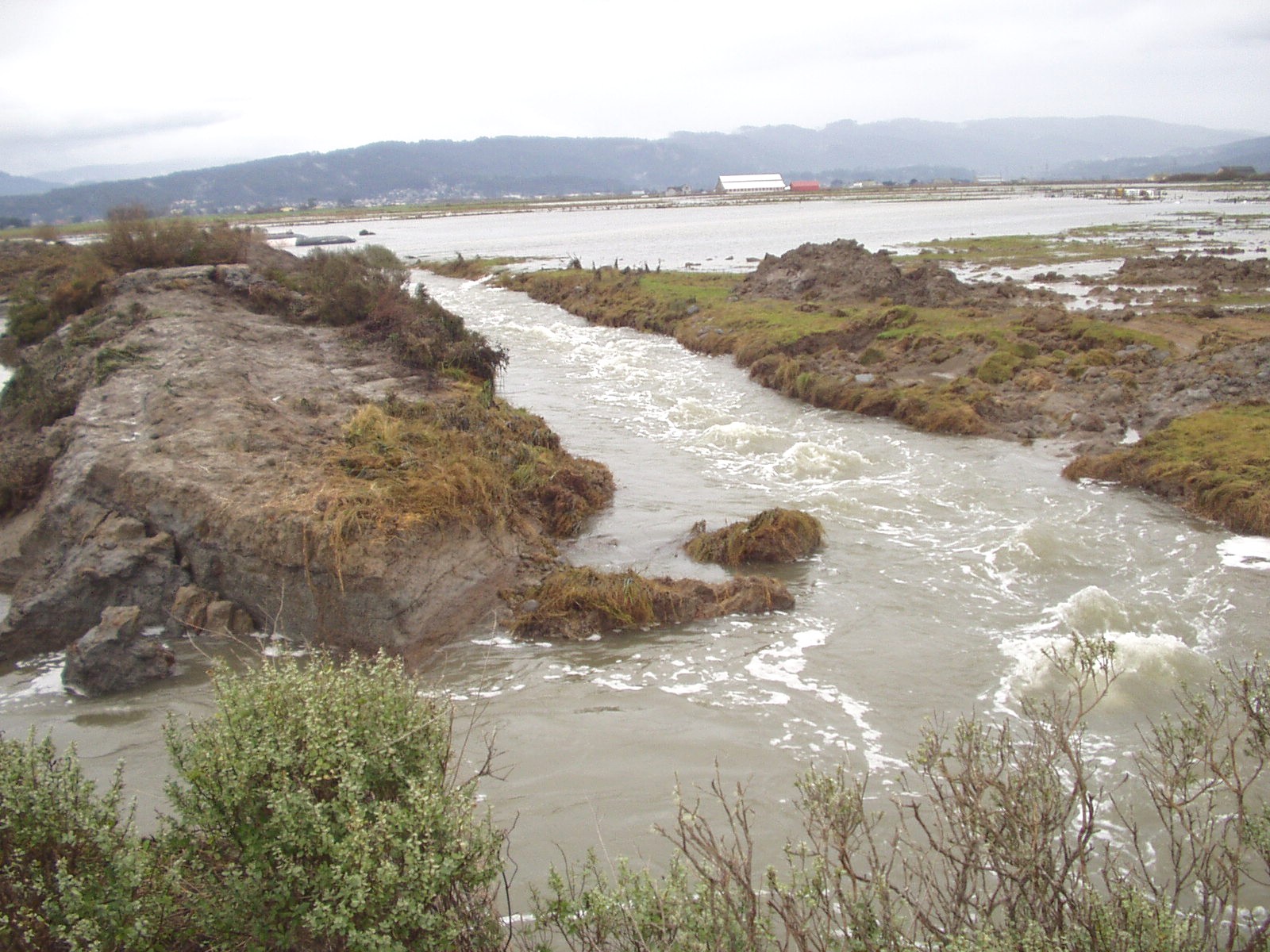
At low tide the water rushes out of the fields, creating very swift water which must be controlled. The major obstacle in this installation was crossing this 5ft to 7ft deep channel, below the surrounding fields. The hole in the levee was approximately 12ft deep.

This picture was taken at the tallest of tall tides. At low tide the AquaDams have no water next to them. This will be the tallest tide during the length of the project, which is scheduled to last until July 4, 2004. The AquaDams have been in place over two months.
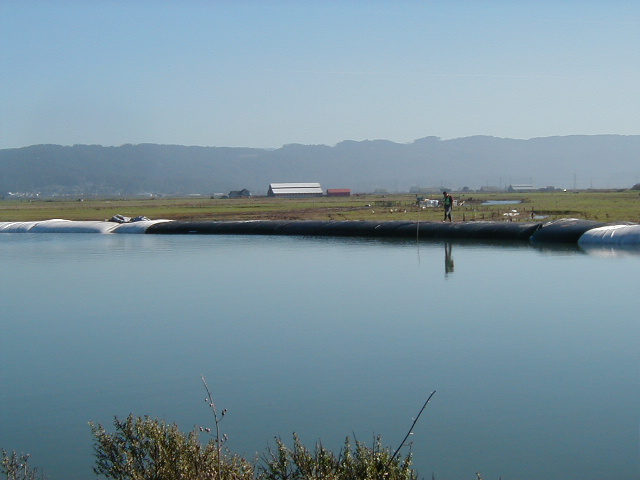
The first sign of levee failure was on December 25, 2003. Aqua Dam, Inc. started installation on the 26th of December and finished on January 3, 2004. The AquaDams required only two days to install. This picture was taken during an extremely tall tide on January 23, 2004.
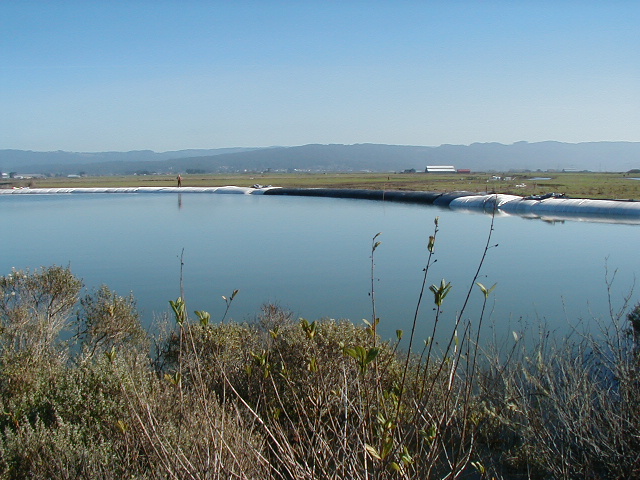
At this point the pastureland's have been drained and the grass is growing again. By acting quickly, the salt water was removed from the pasture lands before doing permanent damage. The dairyman’s herds could then return to their fields.
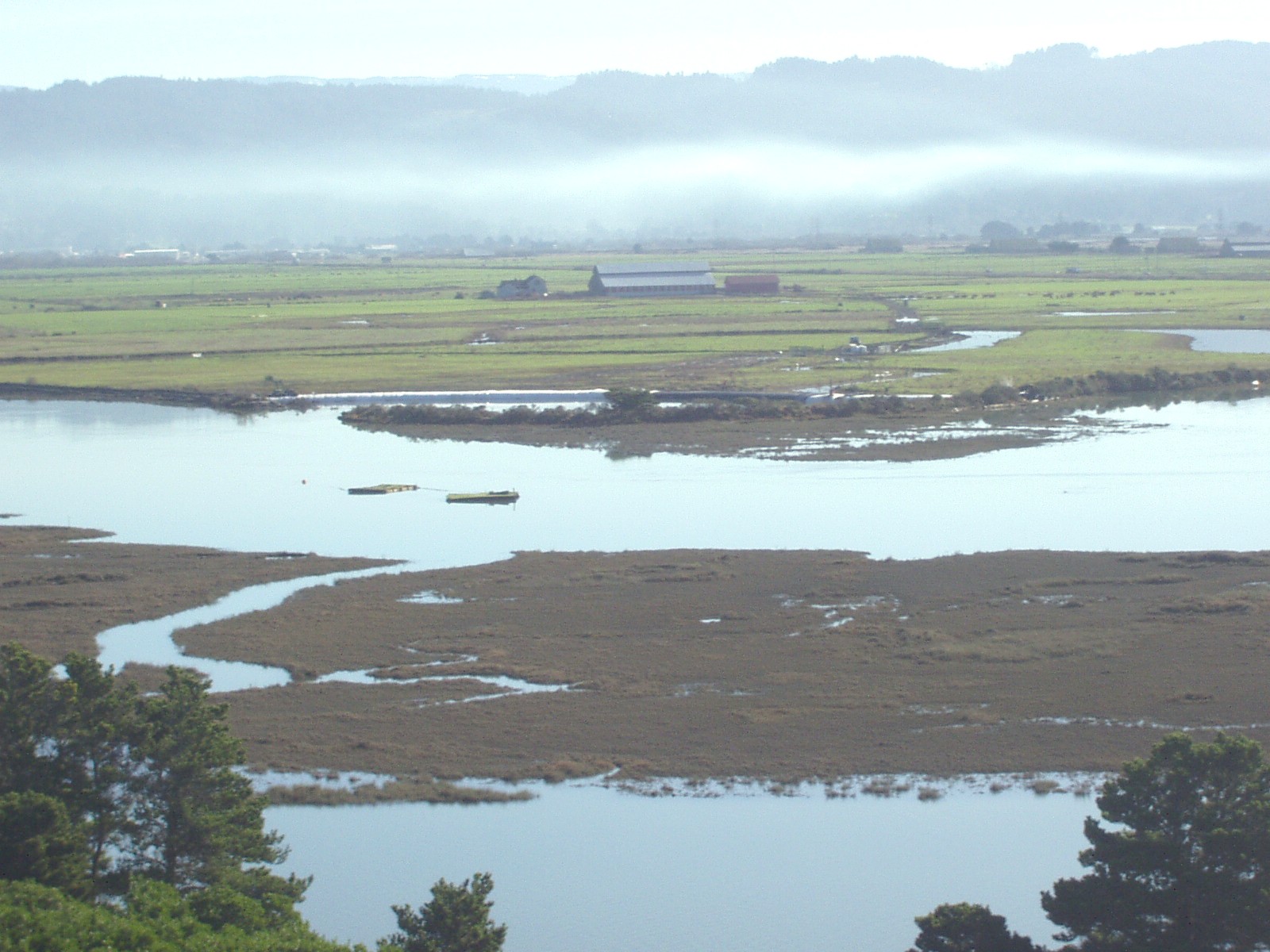
This was taken two months after installation. The levee will have to be permanently fixed during the summer months, after the fields have dried out. The AquaDams were a quick and temporary fix to the flooding caused by the breech in the levee.
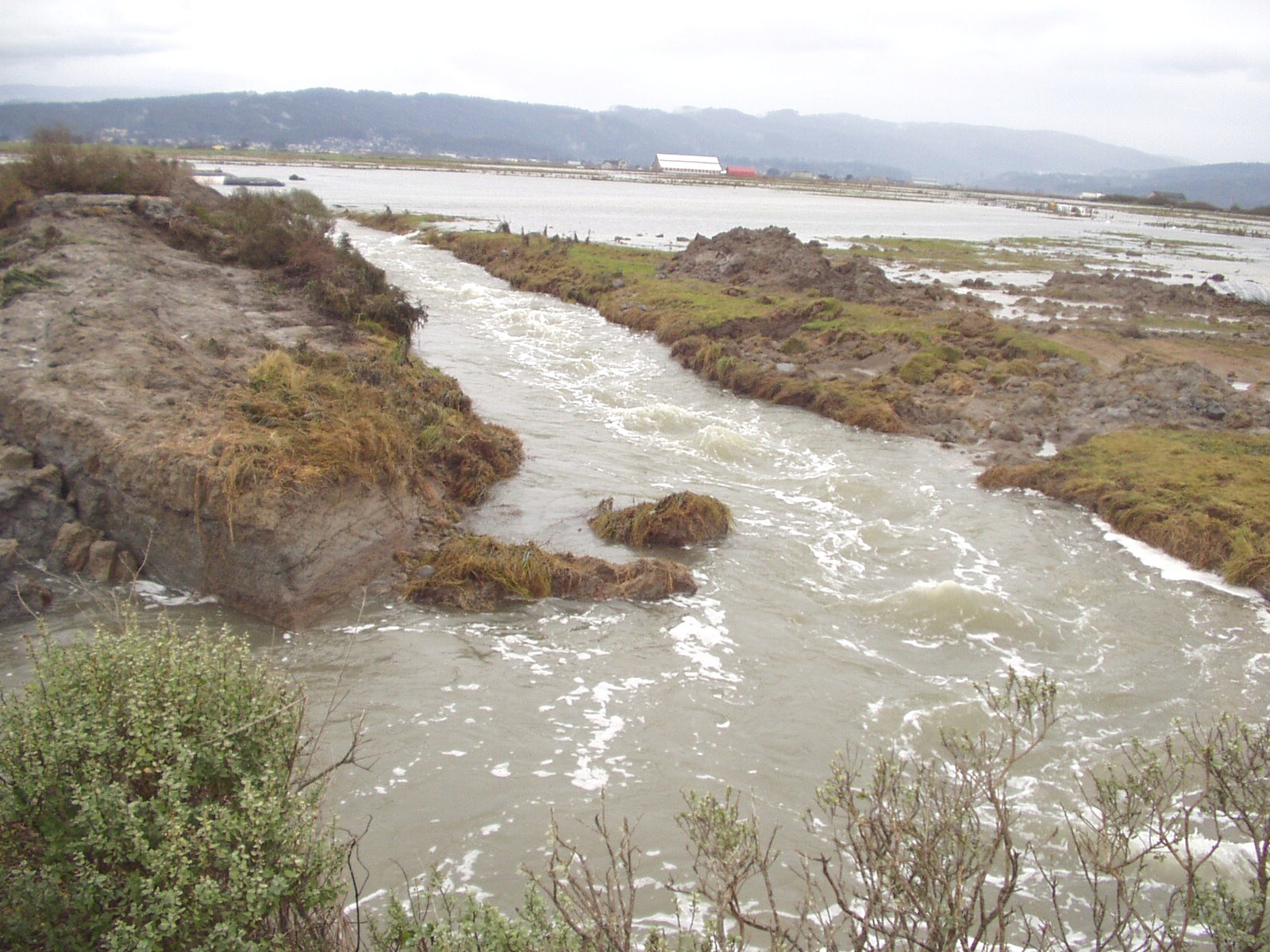
This channel is approximately 5ft deep below the surrounding fields. Because of the tide, water is rushing in and out of the levee four times a day, eroding the levee, and making a hole 12ft deep during low tide.
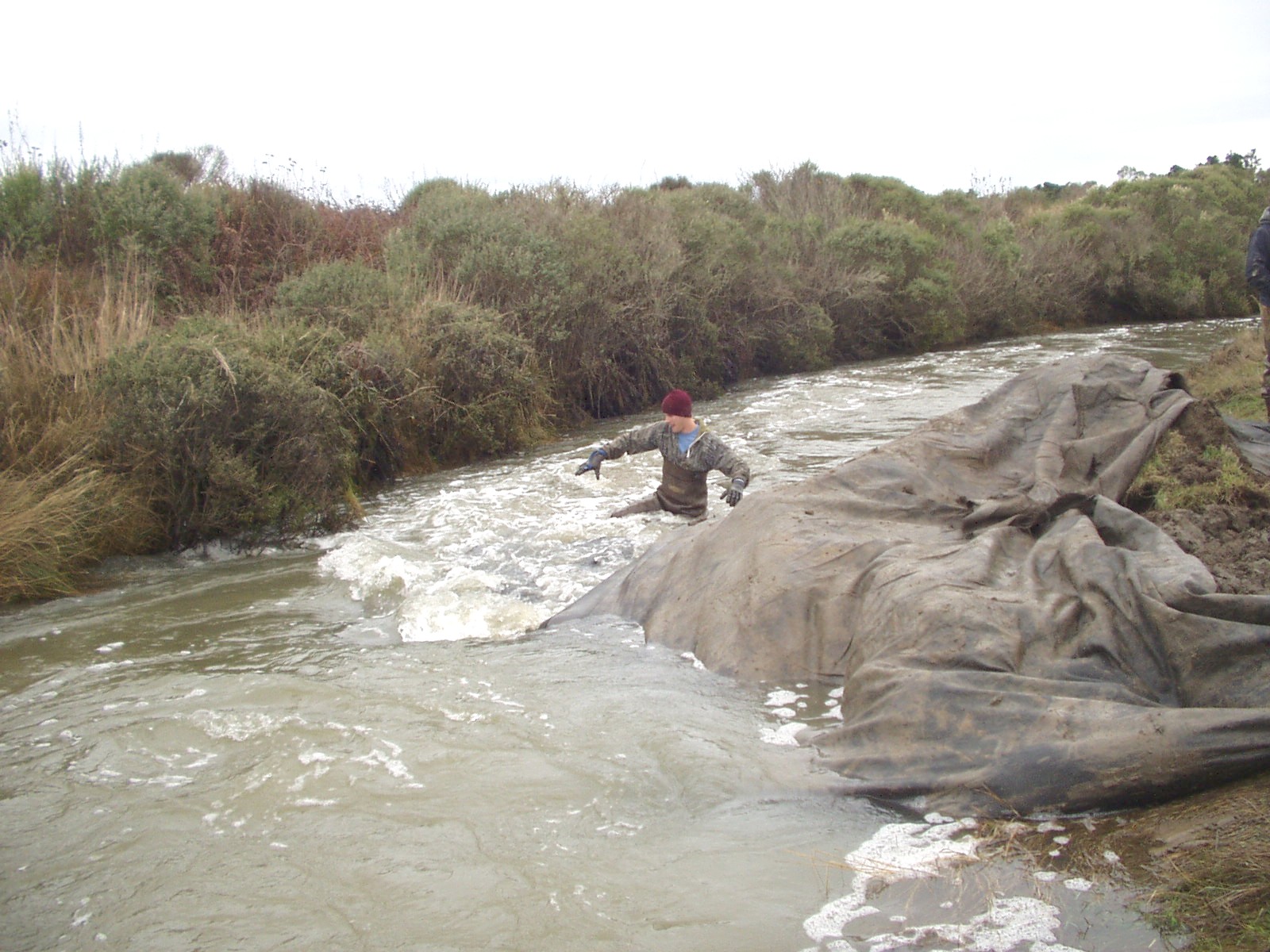
What was unique with this project was how to close off this fast-moving water. We had to create a platform 5ft to 7ft tall across this channel, using on-site mud. The mud was pushed into the outside skin of an AquaDam. This kept the mud below the AquaDam from being pushed out.
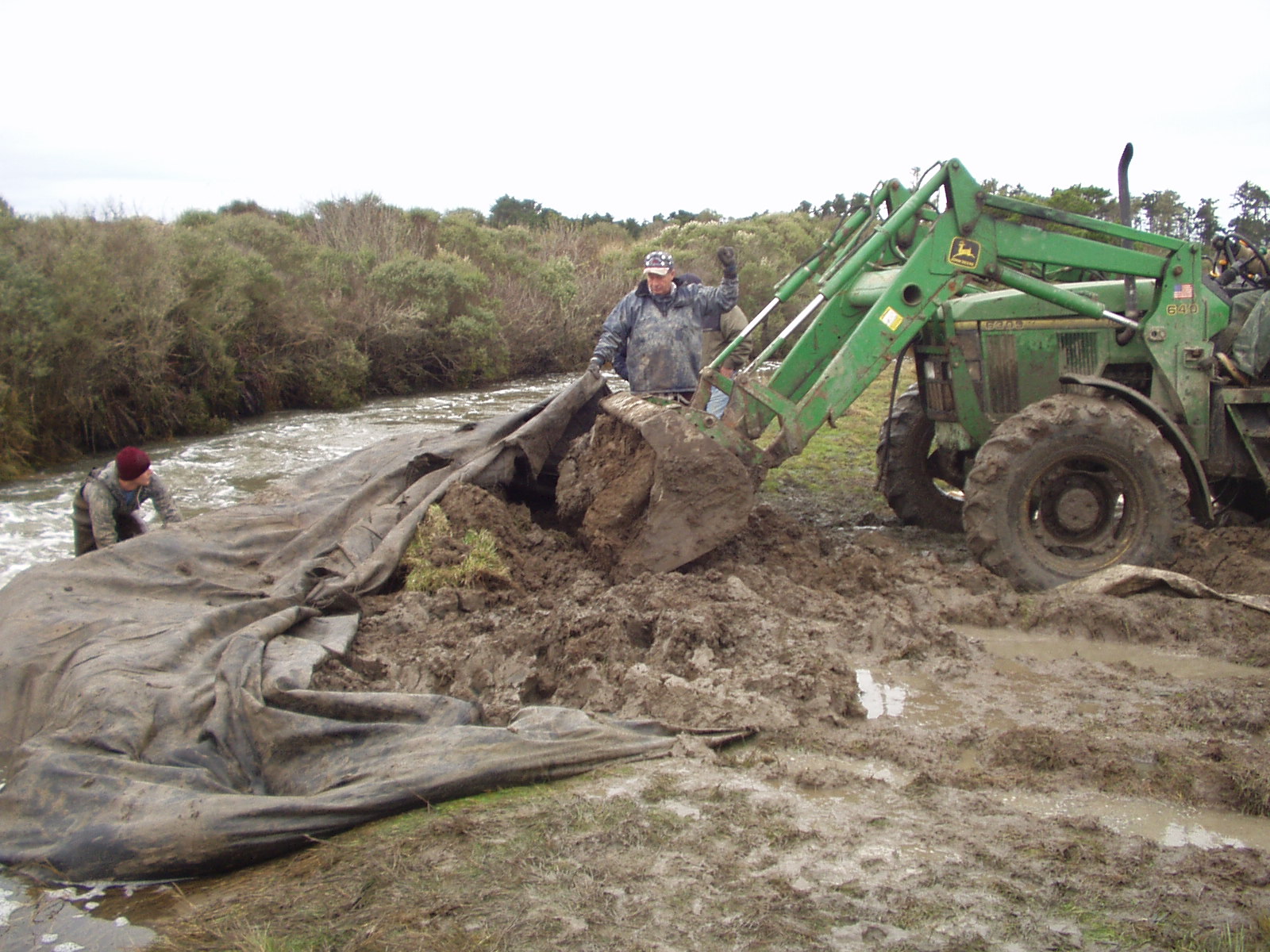
The man pictured here is standing on a tube partially filled with mud. We had to use several tubes of mud to create a platform big enough to support the AquaDam. At tall tide the man’s head would be under water. It took a tremendous amount of mud to fill up a base large enough to support the AquaDam.
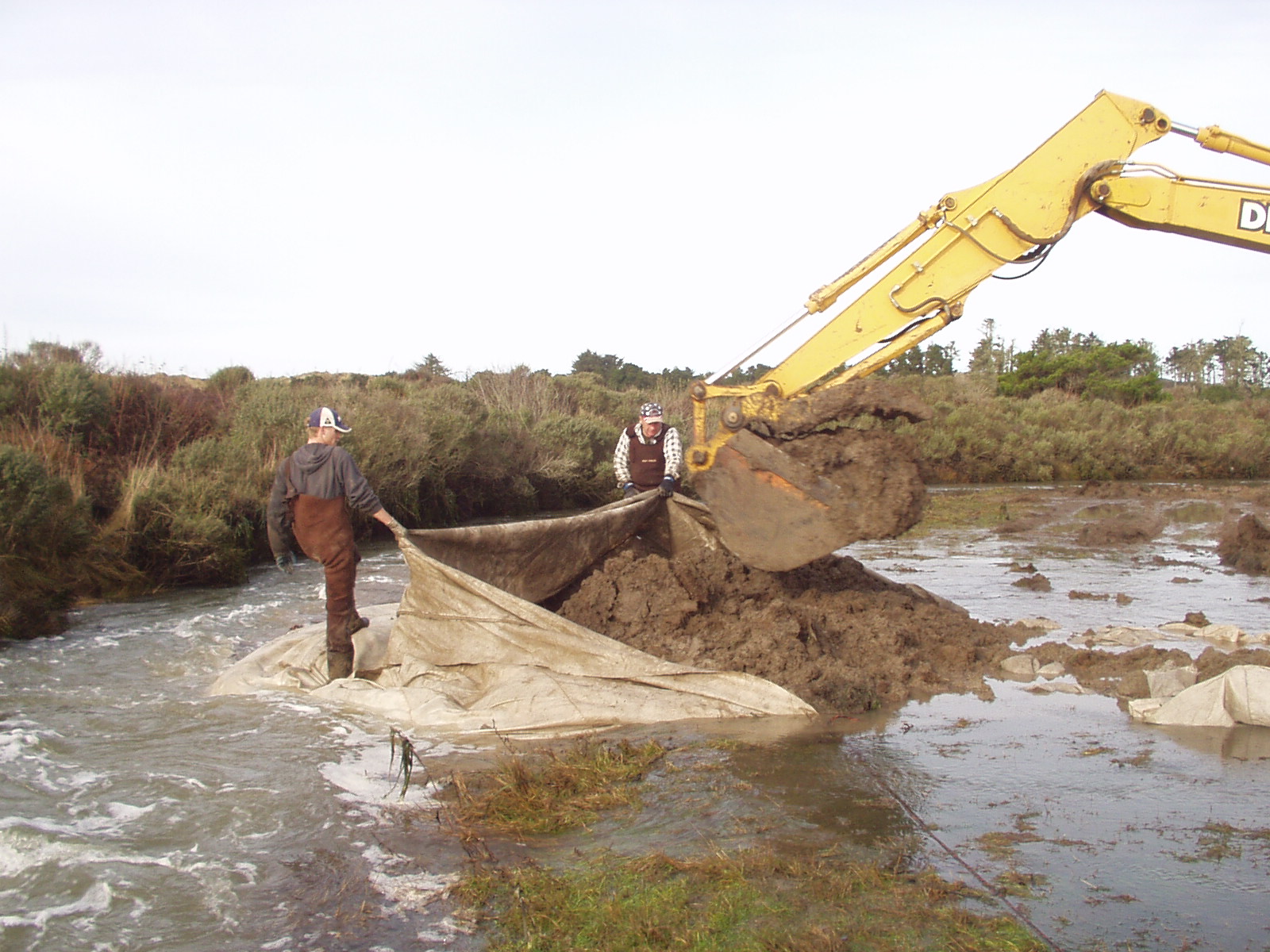
An excavator was found to be the most efficient way to load mud into the long bags which effectively blocked off and raised the bottom of this channel. We had never attempted this before and six months later the technique has proven effective.
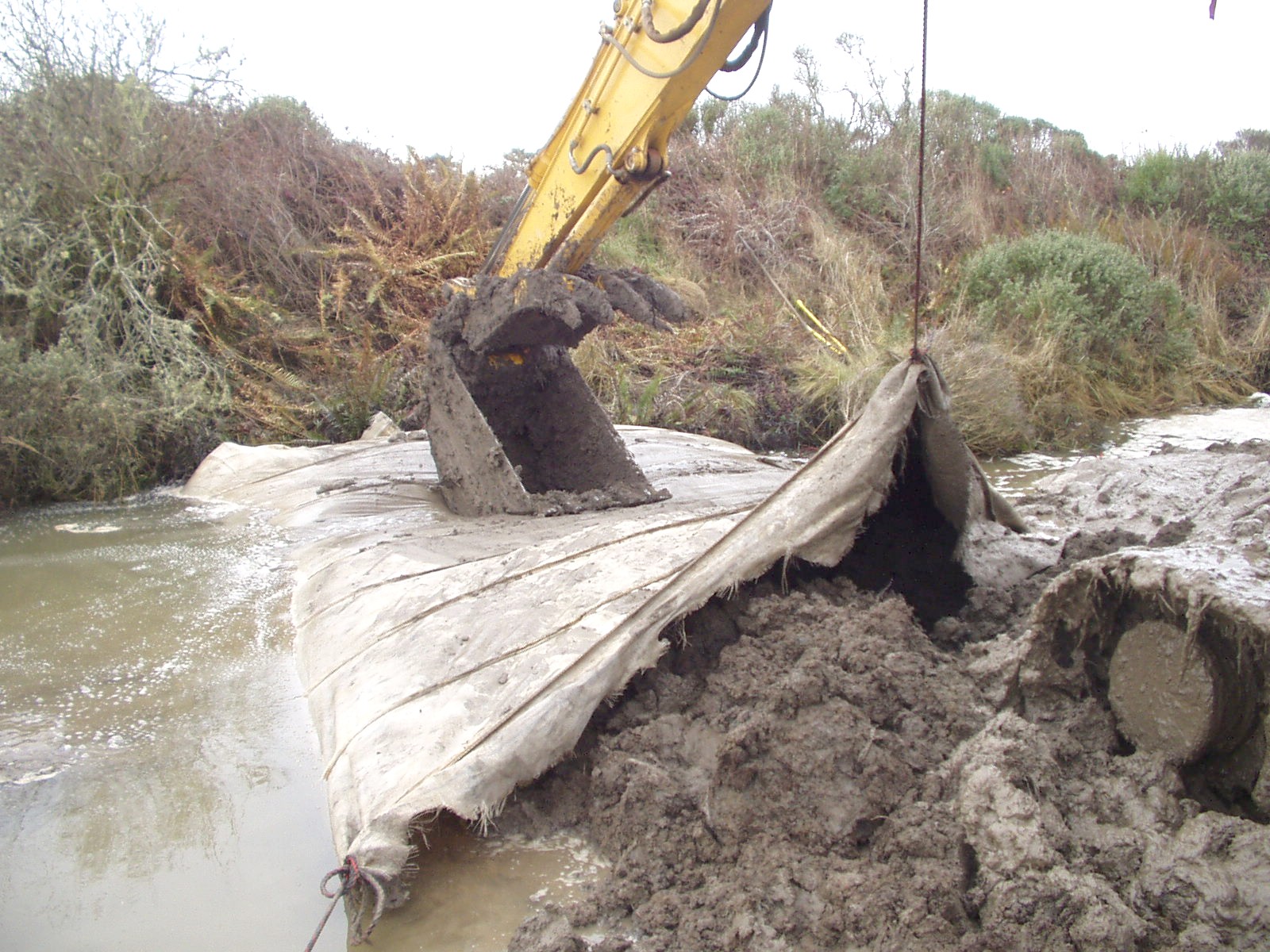
The entire channel has been plugged at low tide using several tubes of mud to create a stable platform. The mud was pushed in along the top, stuffing the dam like a huge sausage. Using mud turned out to be a very quick way of dealing with a low mud hole that needed to be crossed over by the AquaDam.
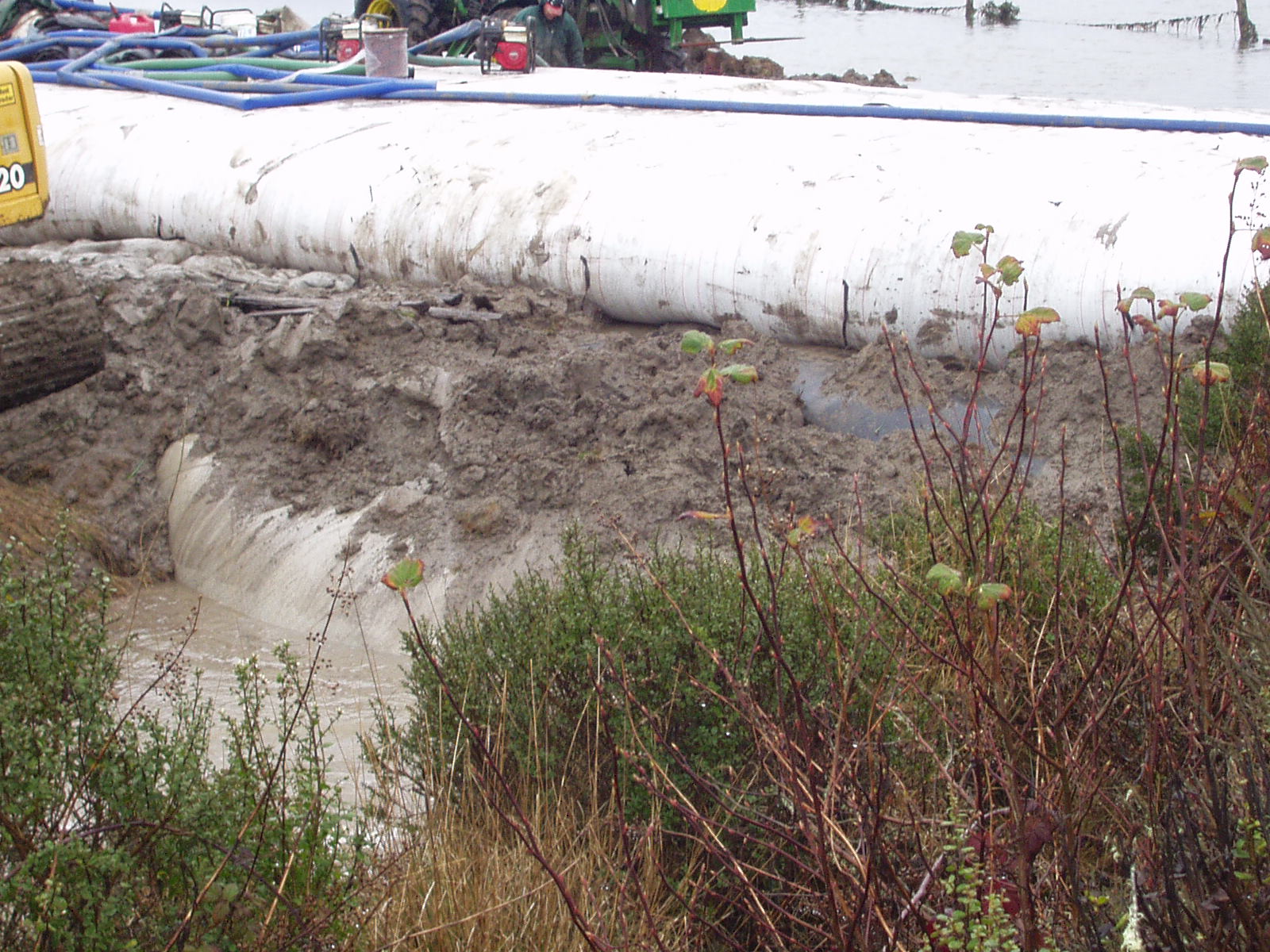
You can see the multiple tubes that are full of mud, one white, one black. Mud has been put on top of them, creating an elevated platform approximately the same level of the surrounding fields which are 5ft to 6ft in elevation. The AquaDam, partially filled with water, is sitting on top of the mud platform.
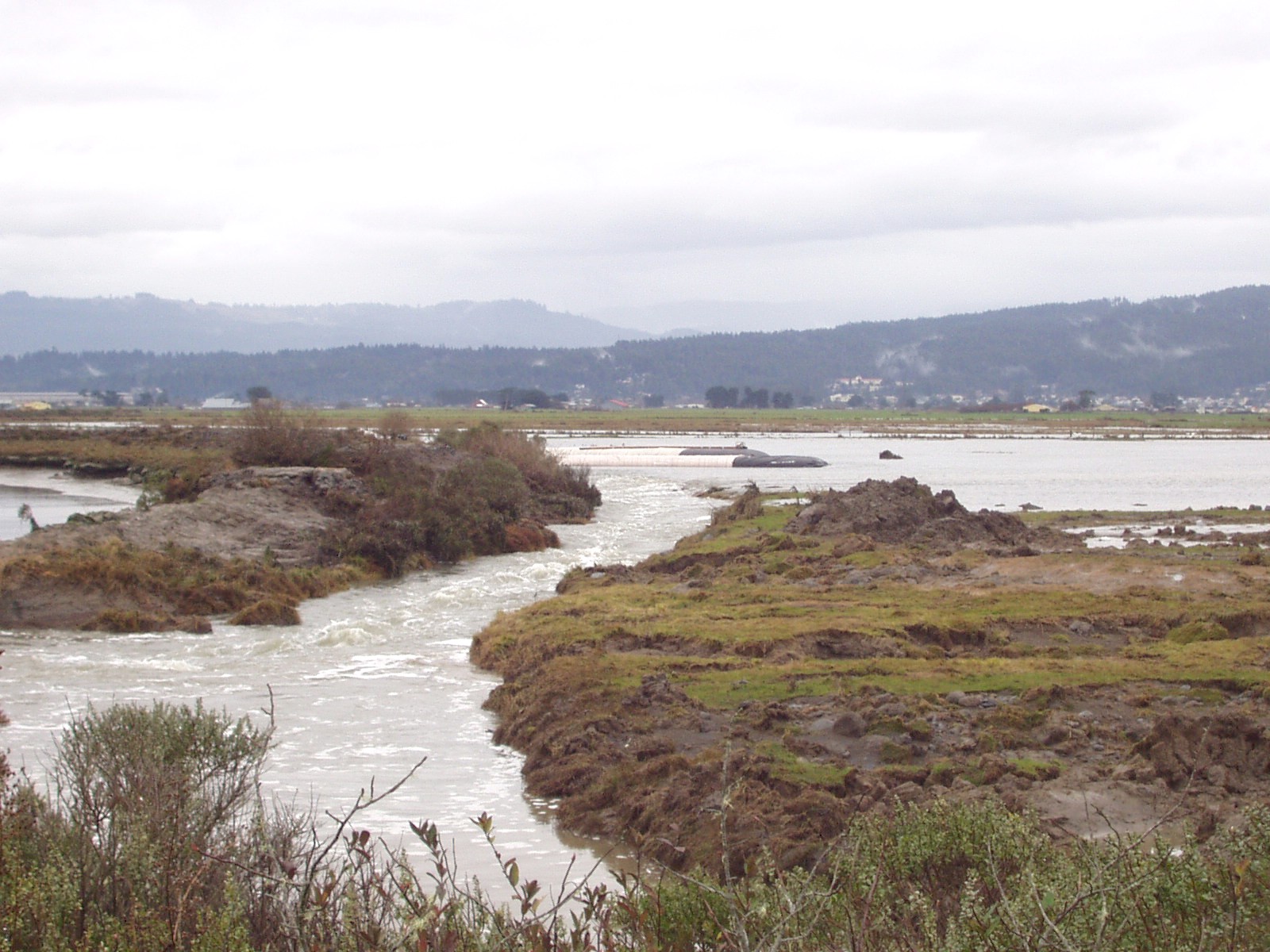
The fast-moving channels of water which were dug to form the original levee.

This 8ft x 200ft AquaDam is arcing towards the 8ft x 100ft AquaDam on the other side. High tide approaches, flooding our work area with a river of water, running in between the two AquaDams.
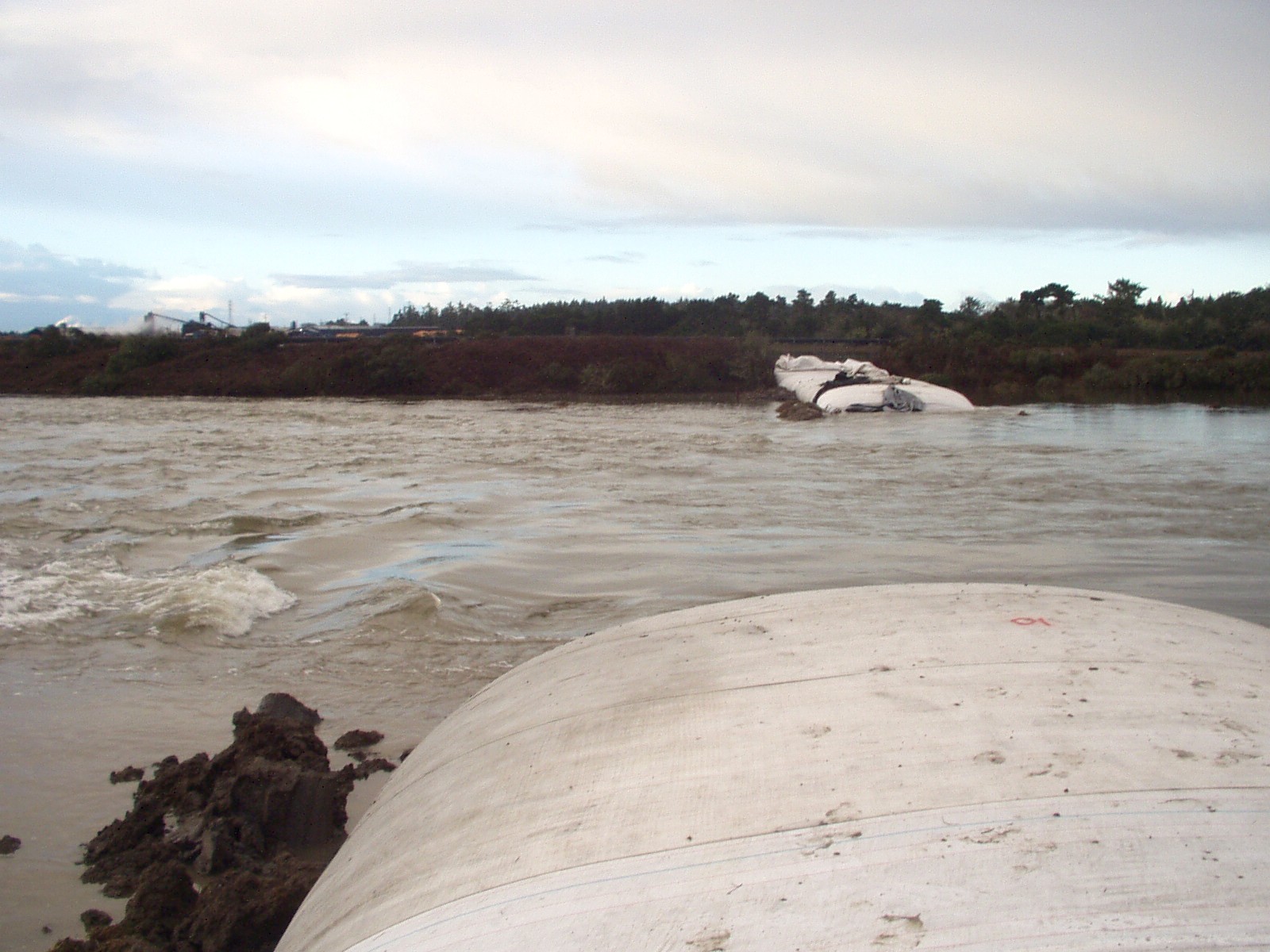
The salt-water is rushing past the AquaDams, filling up the fields during tall tide. Nightfall was coming so we stopped for the day and waited for this tidal cycle to come and go. There was a huge current of water flooding onto the fields.
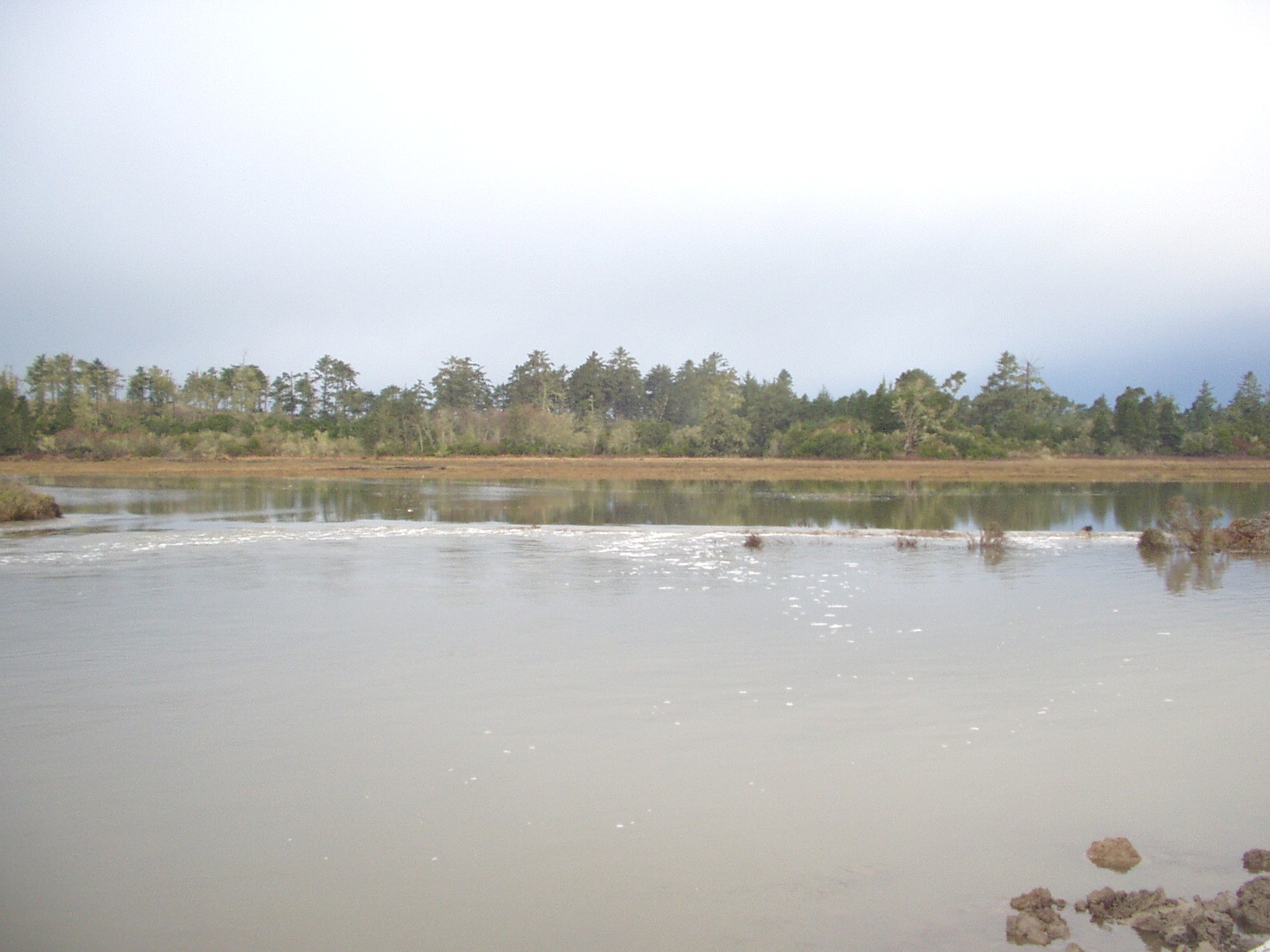
This picture shows the break in the levee at tall tide. After the water is passed this point, it then had to pass in between the two AquaDams.
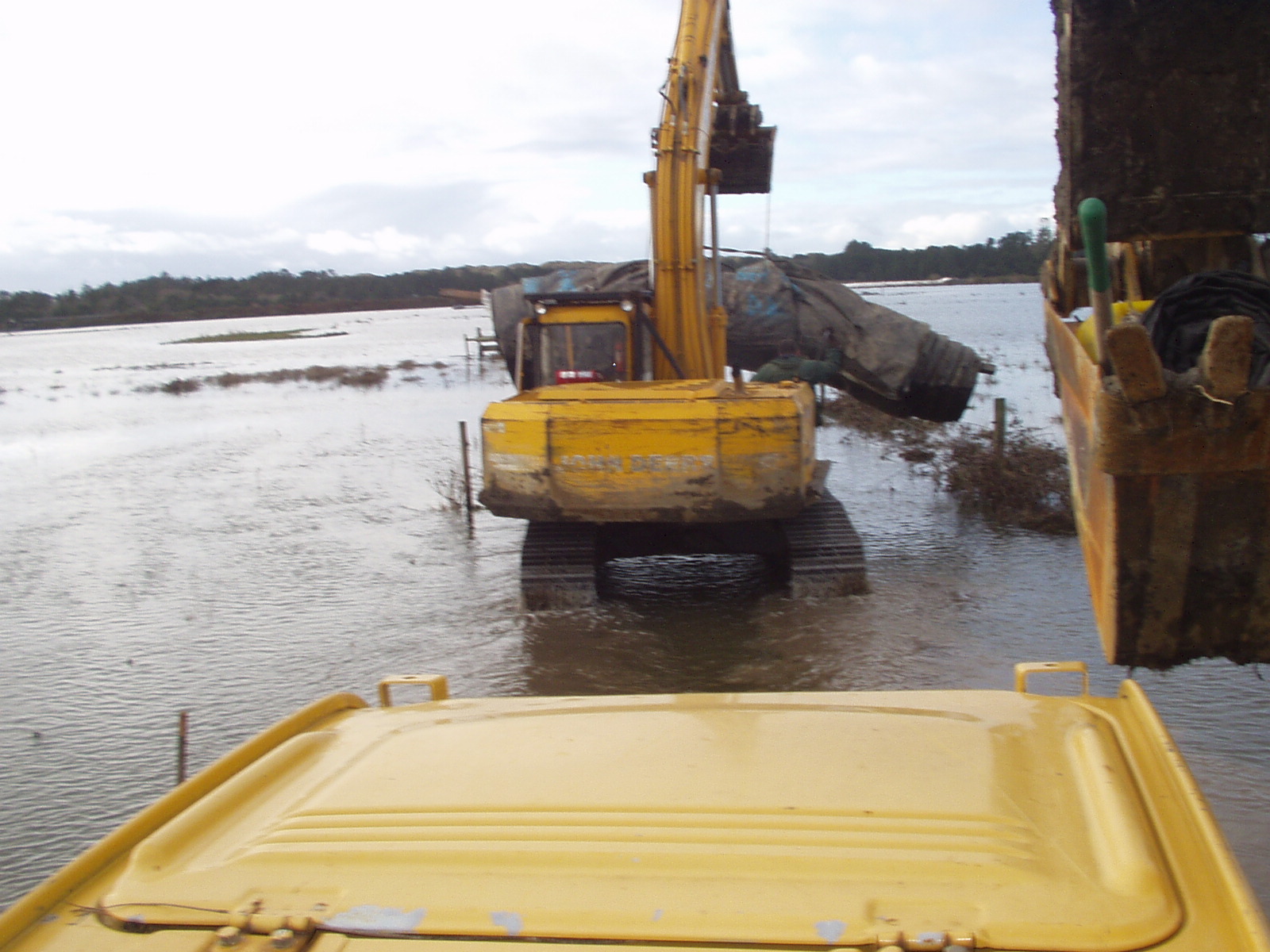
The remaining 150ft AquaDam is being carried out through the flooded fields to close off the section between the two previously installed AquaDams. Only an excavator could maneuver in these flooded fields. The two excavators we used were an essential part of this project.
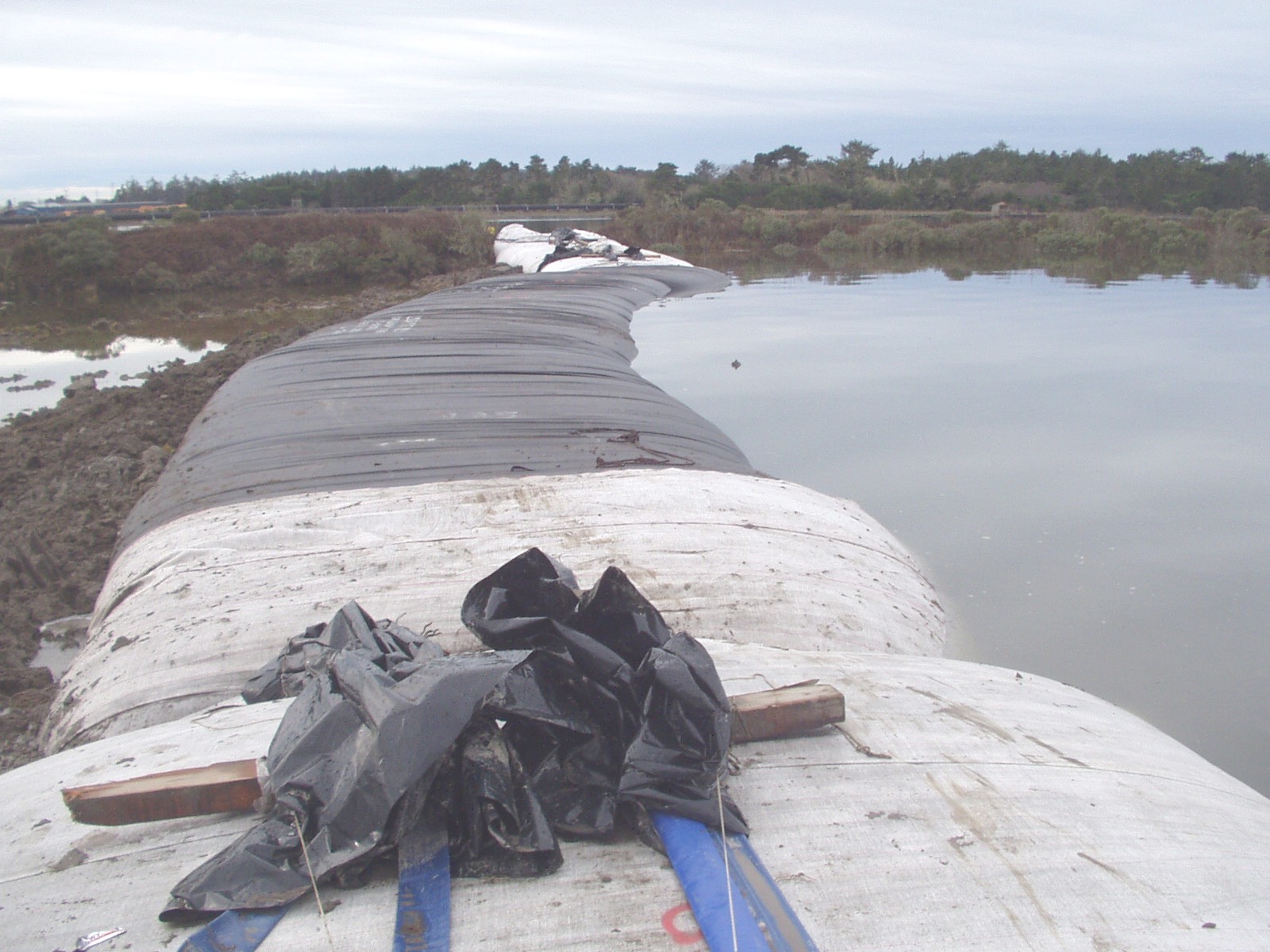
This is the last remaining section. It closed the gap between the two previously installed AquaDams. The entire closure consisted of three AquaDams in total: one 8ft x 100ft and one 8ft x 200ft (both white in color), and a black dam which was 8ft x 150ft. This shows the connection with the two black fill tubes.

These AquaDams were immediately backed up with fill material once the closure was made.
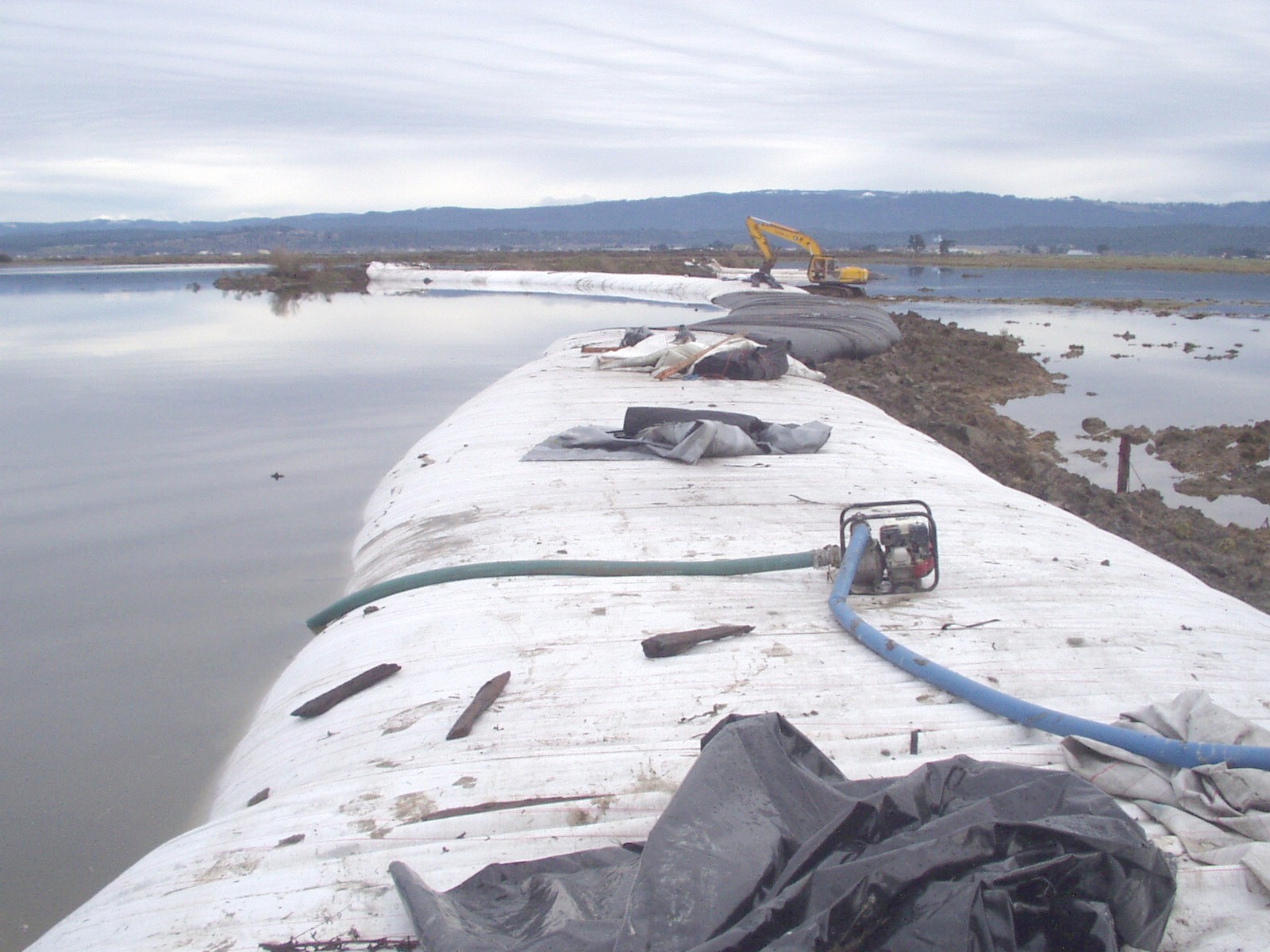
This shows the hole in the levee at tall tide. The excavator is busy pushing mud behind the AquaDams. The water saturating the fields will have to go through the flood gates which drain the fields off into the bay.

This shows a connection with the two fill tubes coming out of the connection collar. They have been surrounded by a clear piece of plastic and then wrapped in duct tape to prevent UV degradation. Fill hoses have been left inside the tubes so we can add water to both sides.
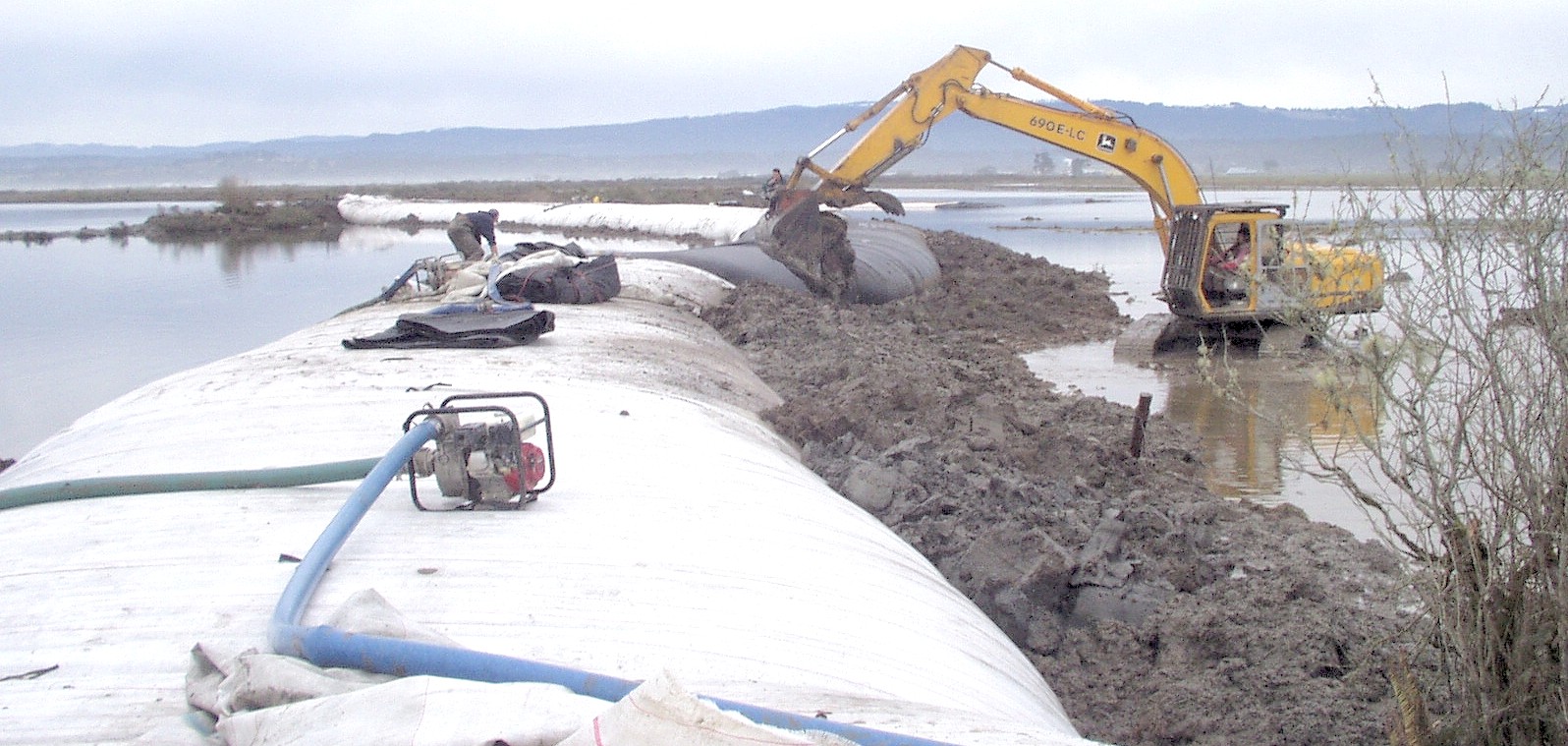
Mud had to be placed behind the Aquadams for three days. Water had to drain out of the mud which squished out until it solidified enough to hold its own weight. Remember: the excavator bucket must not touch the AquaDam. This most likely would result in a hole being punched into the AquaDam.
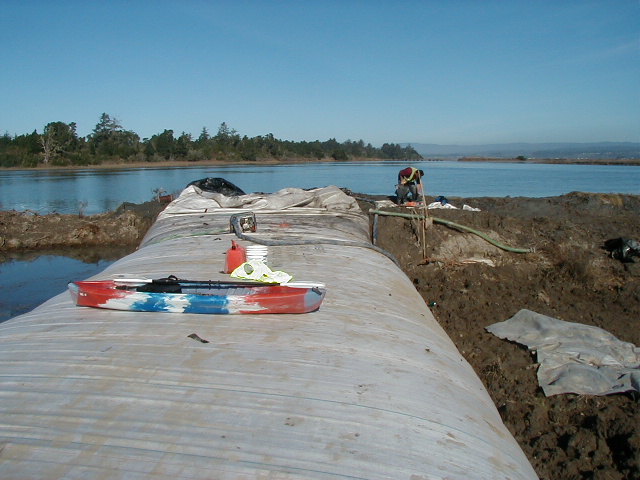
This AquaDam is abutting the side of the levee that is stable. This section goes over the mud tubes which go directly underneath it. The Arcata slough is in the background. The Pacific Ocean is beyond the canopy of trees in the background. Notice that one side is dry, while the other side is holding back the bay waters.
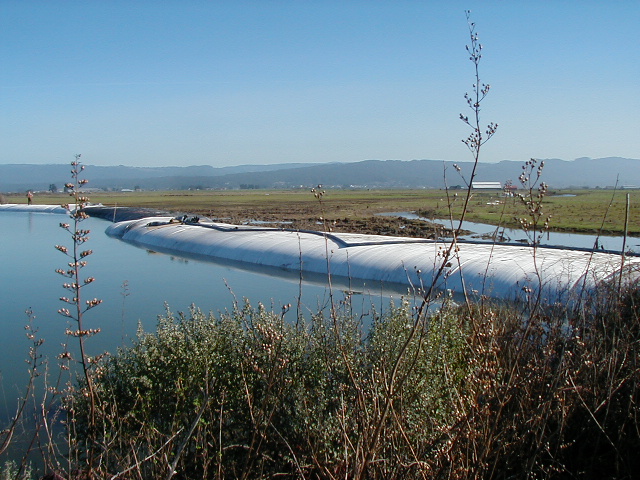
wo months after the installation the pastureland is green and most of the water has drained off.
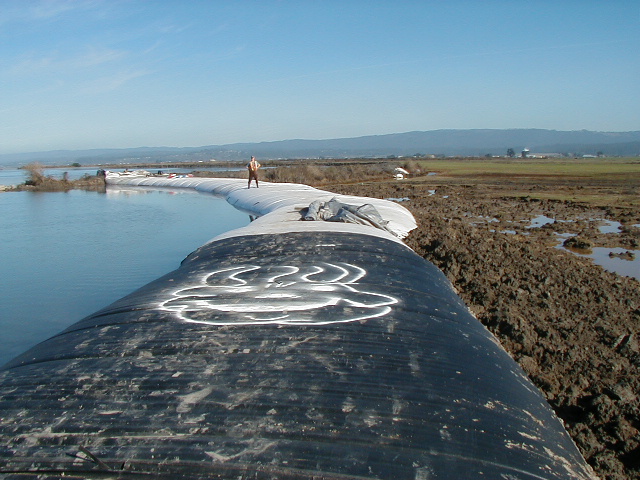
You can see the tall water at tall tide. It is only 2ft below the height of the AquaDam. To increase its retention capacity, we put fill material directly behind. After the levee breech has been fixed, a bulldozer will level off the pastureland for re-seeding.
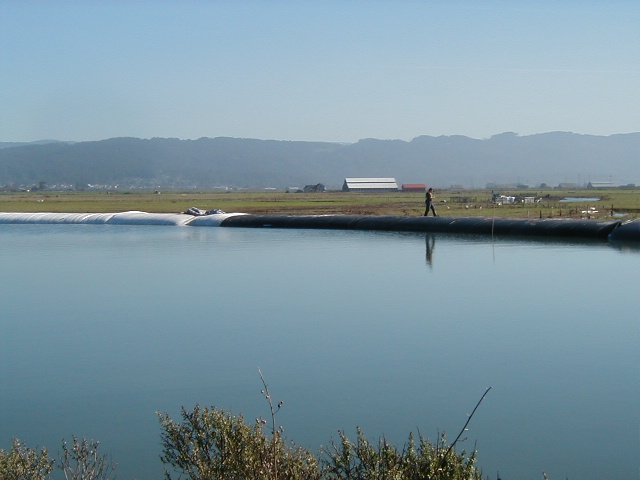
Before the AquaDams were installed, the water was rushing past the barn. During tall tide, all the pastureland was covered in water. This picture shows the middle section of the three AquaDams which made up the 450ft linear feet of temporary, water-filled levee.
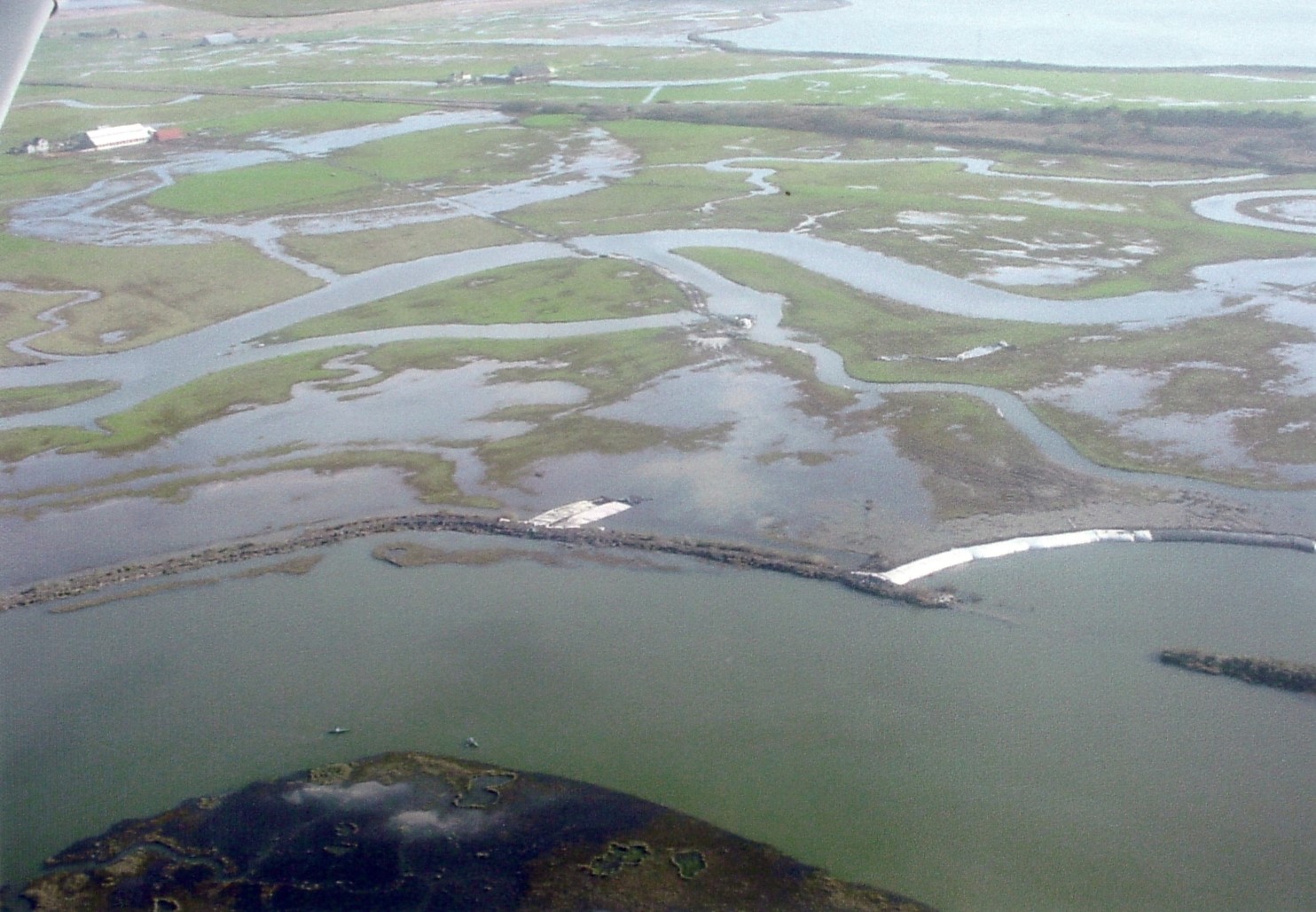
This is an aerial view of the entire levee breech area. You can see that the fields are returning to their normal state, the water having drained off. The dairy cows are happy, and the owner can return to his work. Once again, AquaDams and the Aqua Dam, Inc. team saves the day!
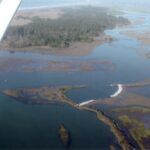
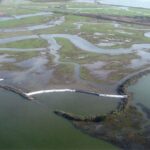

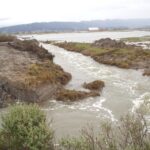
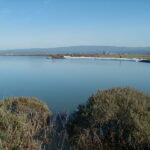
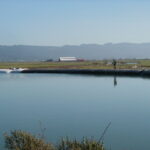
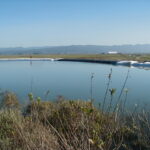
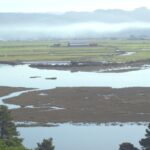
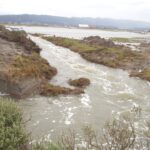
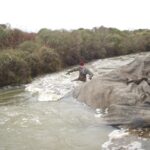
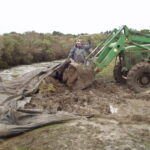

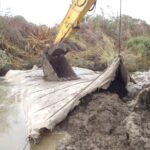
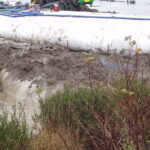
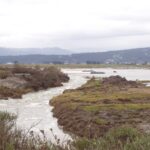
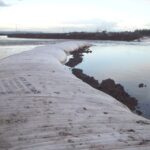


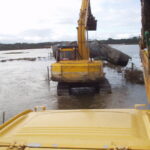
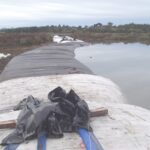
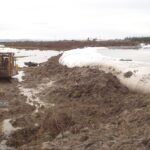
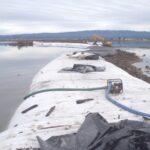
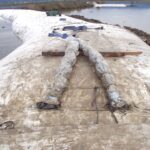
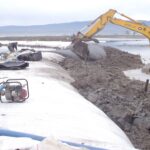
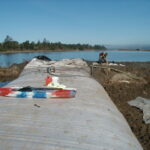
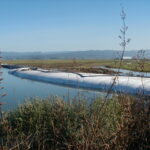
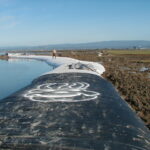
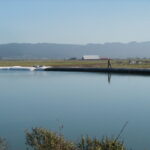
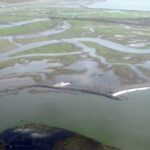
450ft of 8ft tall AquaDams, Emergency Levee Repair, Humboldt Bay, Tidal.
